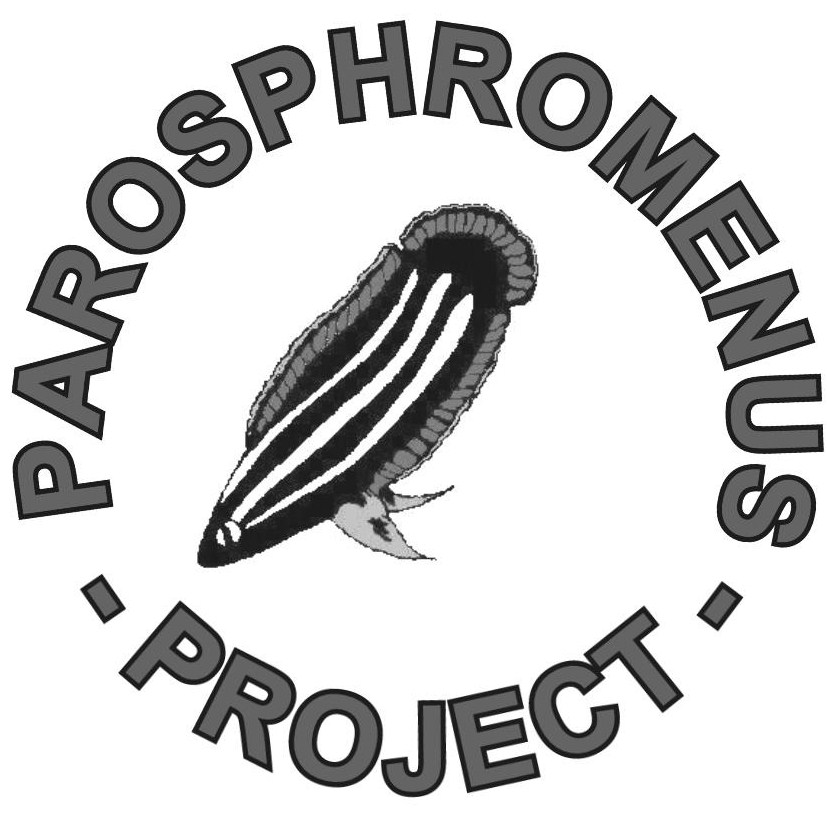Parosphromenus-Newsletter No. 96  Bielefeld,15th 02- 2012
Bielefeld,15th 02- 2012
Dear Friends of the licorice gouramis, here is our new newsletter.
1. Maps: By popular demand we now want to develop our maps-module on the homepage to display (in addition to the main occurrence areas of our fish) the distribution of their friends (= us) on our three continents. However, there are problems of data security: We can not simply publish the name or even the postal address of our members on a “distribution map”. Therefore, we have found a twofold solution:
a) town only: we will highlight all the cities where Paro-friends live. If there is more than one in a town, to the city name the number of Paro-people is added. Names do not appear at all. The exact address is never visible, of course. This accuracy is sufficient for many purposes. The advantage is that we do not have to ask anyone’s permission, because no individual is personally identifiable. Who wants to know more, you must contact us with a request to info@parosphromenus-project.org
b) names too: In the weeks to come we shall ask all members whether one agrees, if we specify his/her name there near the town’s name on the map. In any case no address and no street will be given, only name (if allowed). We hope that we get a lot of consent for this. Without personal consent no name is specified. If this is well accepted, it will be useful, if not, maybe we need to cancel b) again and remain with the safe method a). We hope that this service will significantly increase the value of our network. The contact with the nearest dwelling friends is especially important to many new members and we want to encourage them.
2. New Print Media: David Armitage is preparing an English-language brochure on “liquorice gouramis” with texts from the Parosphromenus-Project of Peter Finke; he is still looking for some pictures. Horst Linke is preparing a complete revision and considerable expansion of his book on all labyrinth fish, and a comprehensive chapter on Parosphromenus will be included with fantastic photos. The book will be published in German and English, but there will be also a Chinese version with still more images. Martin Hallmann and Peter Finke prepare a first monograph on Parosphromenus. The book will hopefully be released in late 2012 in German. Whether a translation is possible, is not yet clear. In a few days already issue No. 40 of the popular magazine “Amazon” will appear, this time with the main topic “Parosphromenus” (with contributions by Horst Linke, Günter Kopic, Martin Hallmann and Peter Finke). An English translation has been announced (but not yet dated). In April the German-language “DATZ”-journal will appear with the emphasis on sustainment and conservation. An article by Peter Finke will introduce the Parosphromenus-Project, which appears on the cover, too. Finke has already published an article by Finke in the journal “VDA-aktuell” on the water and food for these fish (published January 2012).
3. Distribution: The newly organized distribution services in Germany has been very well accepted, even though the winter weather really was not conducive. Our distribution manager, Michael Beuscher, had quite a lot to work and to join breeders and buyers. Today, offspring is at hand of the following species: alfredi, bintan, filamentosus, linkei, pahuensis, paludicola, quindecim, tweediei and, furthermore, the spec. Sentang and Seruyan. A pair costs 15,00 €. Many prospective customers prefer shipment. This is disposable only to a limited extent, because only a few breeders accept this method. The warmer it gets, the less problematic it will certainly be. There are bigger problems with shipping fish to other countries. Although we have also received some good advice on that (e.g. from Dr. Anton Lamboj, Austria, and Nicolas Buisson, France) it is especially difficult to calculate the shipping time and the special circumstances. We are interested in proposals on how this could be improved.
4. Renewal of the godfather-program: So far, many of our breeders operate at the limit of their capacity by being godfather of too many species. We know from experience that it is much more effective if a person has to take care intensely only for one species (officially, what he privately does is his own business). For example, we have a member being a master breeder of P. quindecim, and we can be sure for many years already (and probably in the future) that you can get that species there. We would like to promote this model! So please let us know if someone thinks: I’m doing fine with species x, I should like to propagate it for a longer time. In some time we hope to arrive at a list of safe addresses of this kind, regardless the results of the current census’. More individuals should concentrate on the long-term care for such species that do well under their conditions.
5. Spring Census notice: We would like to point out just in time: April will be the month of the Spring Census! Be prepared!
6. “Other forms”: Unfortunately, I’m still not gotten around to supply the missing descriptions of that hitherto not scientifically recognized species / forms. Among them are the most traded forms (eg spec. Sentang). I hope to fill this gap soon.
7. First genetic studies have been completed: Dr. Dirk Steinke (leading scientist at the Fish-BOL group in Guelph / Canada) has announced that he finished his investigations which he began 2005; we have sent him alcohol-conserved samples of almost all described species. A first “gene tree” of the genus Parosphromenus exists. Thank you very much; we will focuse on that results in one of the next newsletters.
Until next time the steering group whishes you all the best!
For correctness: Peter Finke (Bielefeld / Germany).

